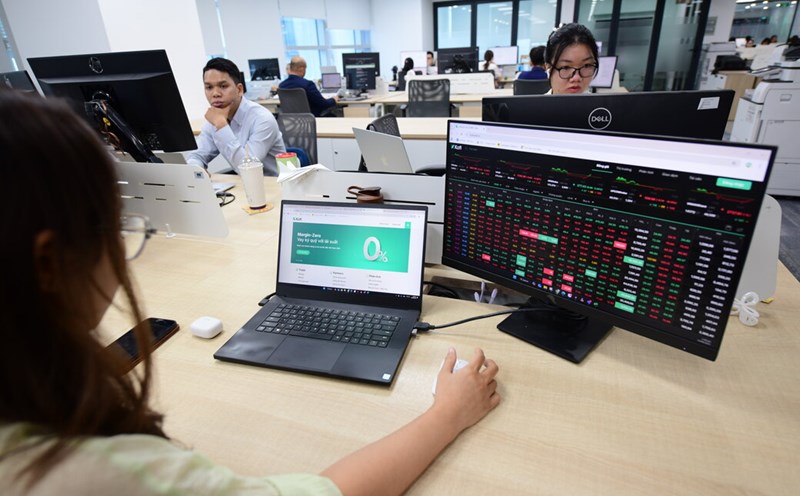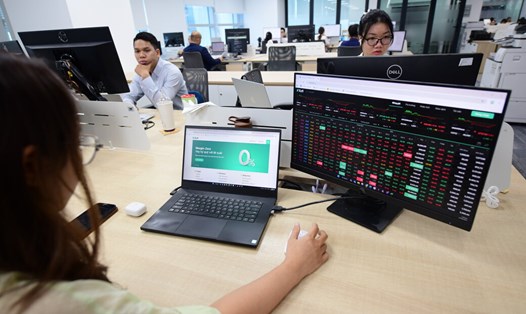In the trading session on October 31, the worried mentality continued to engulf large-cap stocks, thereby causing all major indices to decrease. Especially in the afternoon session, selling pressure continued to overwhelm, causing the index to decrease sharply, although the buyers reappeared at the end of the session but still could not change the situation and the VN-Index still closed in red.
At the end of the trading session on October 31, the VN-Index decreased by 29.92 points, down to 1,639.65 points. The entire market with red is somewhat overwhelming with the seller having 414 codes down and the buyer having 330 codes up. Similarly, red also dominated the VN30 basket with 21 decreased codes, 8 increased codes and 1 reference code.
Market liquidity increased compared to the previous trading session, with the trading volume matched by the VN-Index reaching more than 777 million shares, equivalent to a value of more than VND 24,700 billion.
In terms of impact, VIC, VHM, VCB and VJC are the stocks that have the most impact on the VN-Index with more than 18.2 points of decrease. Of which, the real estate industry is the group with the strongest decline in the market with 4.22%, mainly from VIC (-6.42%), VHM (-4.62%), VRE (3.76%) and CEO (-6.96%).
Regarding foreign transactions, this group continues to net sell more than VND453 billion on the HOSE, focusing on VIC (234.46 billion), VHM (138.16 billion), CTG (124.25 billion) and MBB (115.93 billion). As of the end of the trading session on October 31, foreign investors have net sold more than VND23,273 billion in October, concentrated in some large-cap stocks such as MBB, SSI, MSN and CTG.
Assessing the market trend after the trading session, investors said that the VN-Index may continue to fluctuate in the short term and did not rule out the possibility that the index will test again in the lower vicinity of the accumulation base formed from September 2025.
The recommendation is given to investors to closely follow market developments to be able to promptly restructure their portfolios if unexpected strong fluctuations appear, especially positions that have reached the cutting threshold. In addition, investors should also proactively manage risks and reduce leverage, while keeping purchasing power and psychology stable to be able to take advantage of market fluctuations to seek short-term profits.
In the current context, with investors' questions about whether the VN-Index reaching the 2,000-point mark at the end of this year is still feasible or not, experts say this is a more suitable target in the medium and long term.
Dr. Nguyen Duy Phuong, Director of Strategic Investment of DG Capital, said that as of the beginning of October 2025, the VN-Index has increased by 55% compared to the bottom in April. However, if we only look at the growth of more than 30% of the VN-Index since the beginning of the year, people can mistakenly think of a successful investment year. But reality is a completely different story, a story of the deep differentiation to the point of creating two worlds in parallel on the same power board.
Statistics show that if large- contributing stocks and banking groups are excluded, the remaining part of the VN-Index will even decrease in points. This has caused many investors to lose money despite the increase in the index, especially in recent months.
The Vietnamese stock market is still possessing strong and sustainable growth momentum for the future. The 1,800 point mark for 2026 is more reasonable, accurately reflecting the growth potential based on the core foundation and business valuation.
"It should be noted that passive ETF capital flows will only disburse strongly when the upgrade officially takes effect. From now until now, capital flows will mainly rely on expectations and cash flow from active funds. In addition, there are still risks of exchange rates, high margin balance, progress of reform implementation or global geopolitical fluctuations, Dr. Phuong stated.












